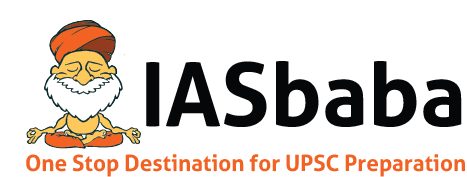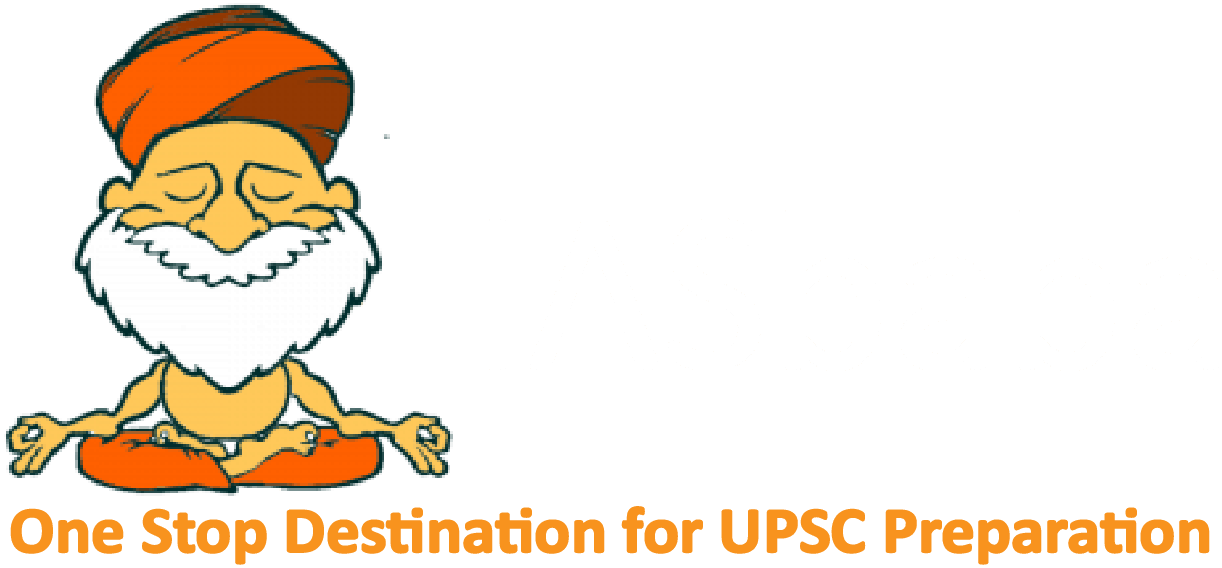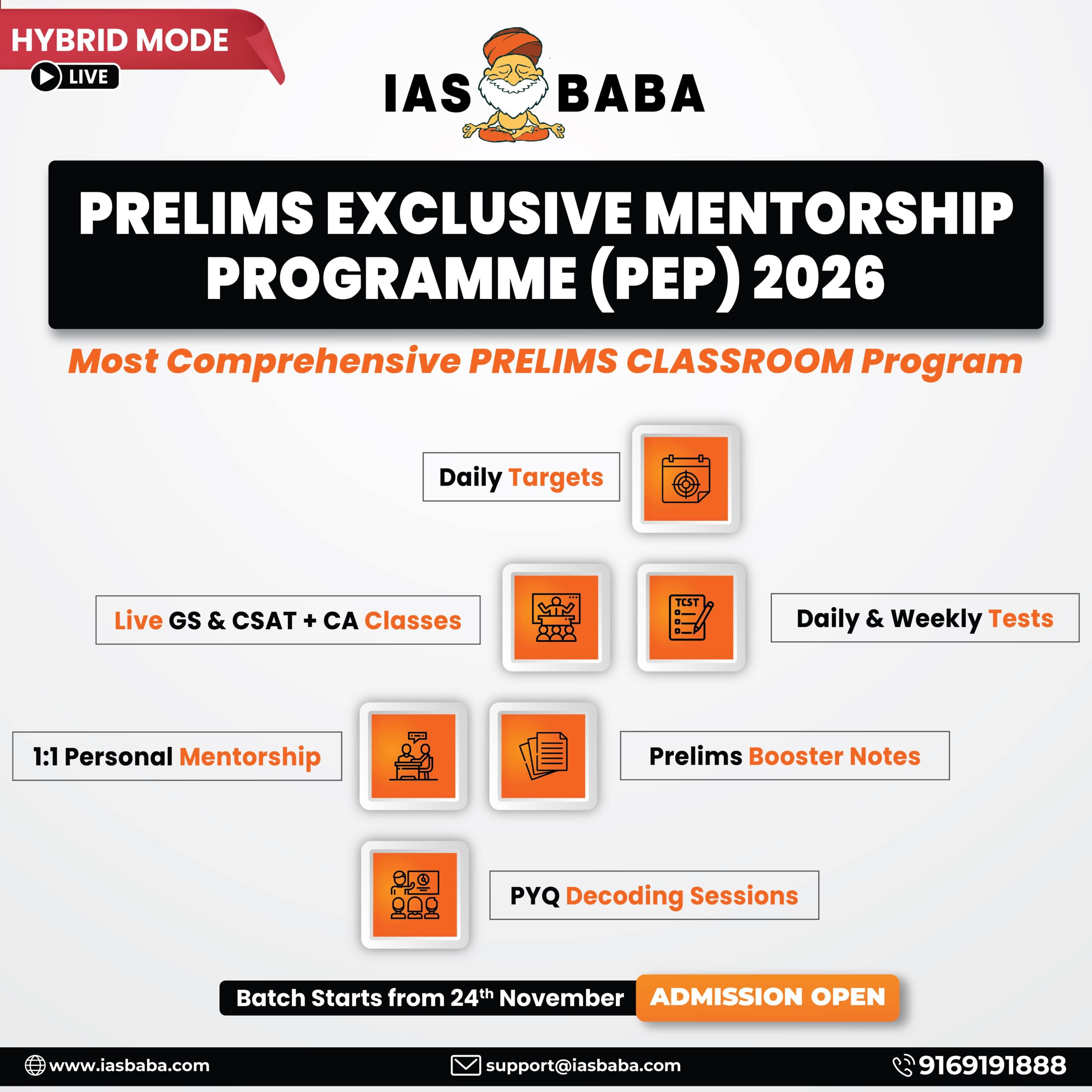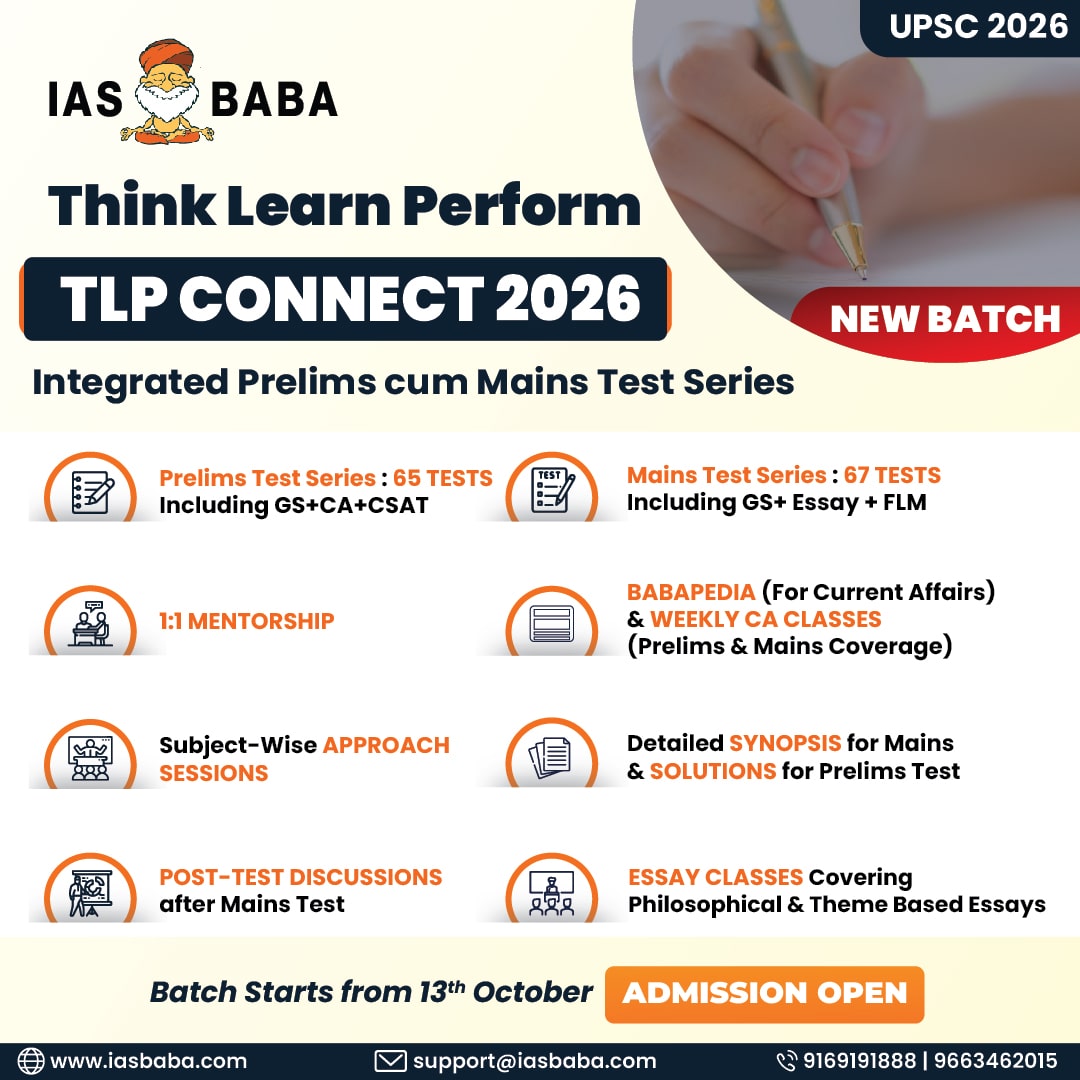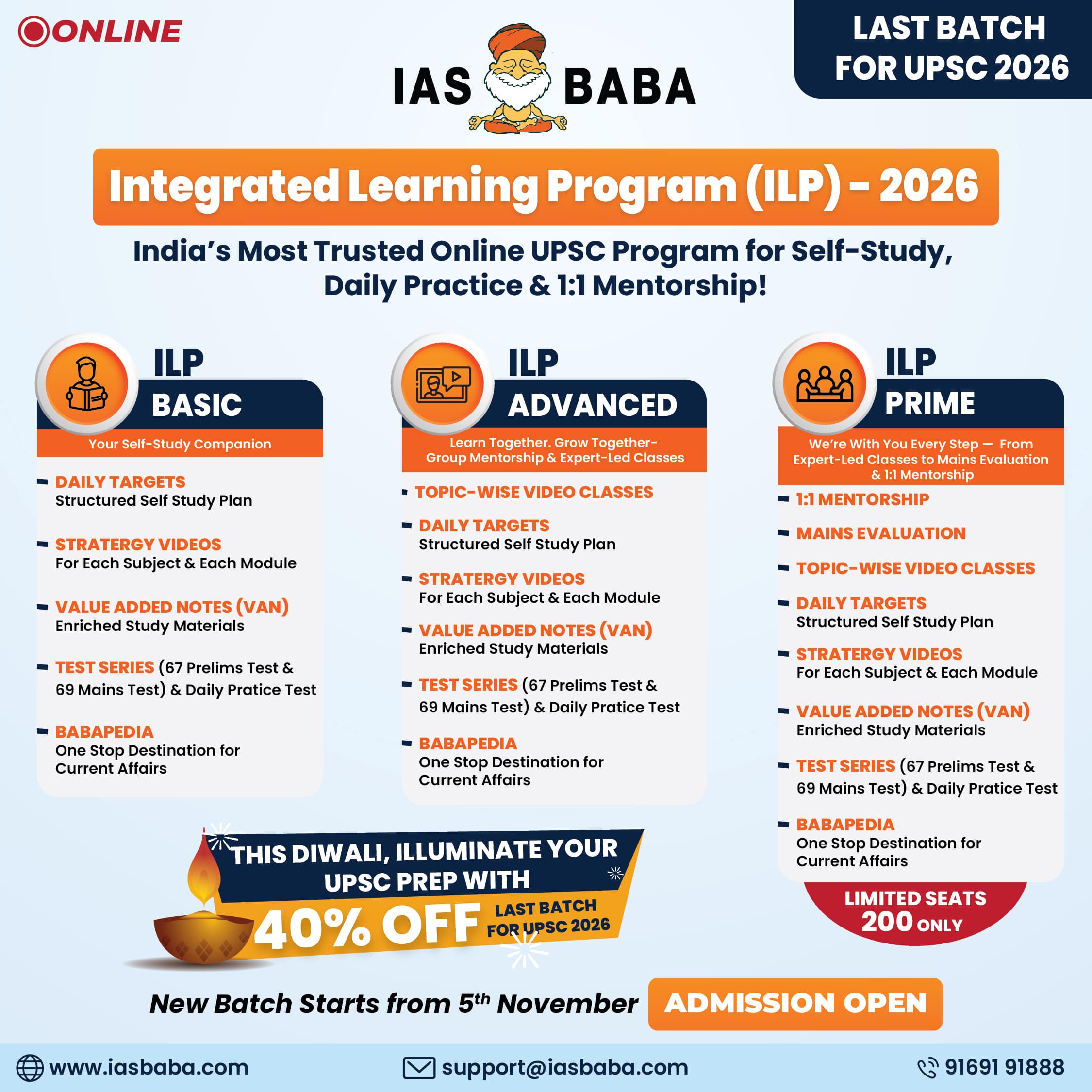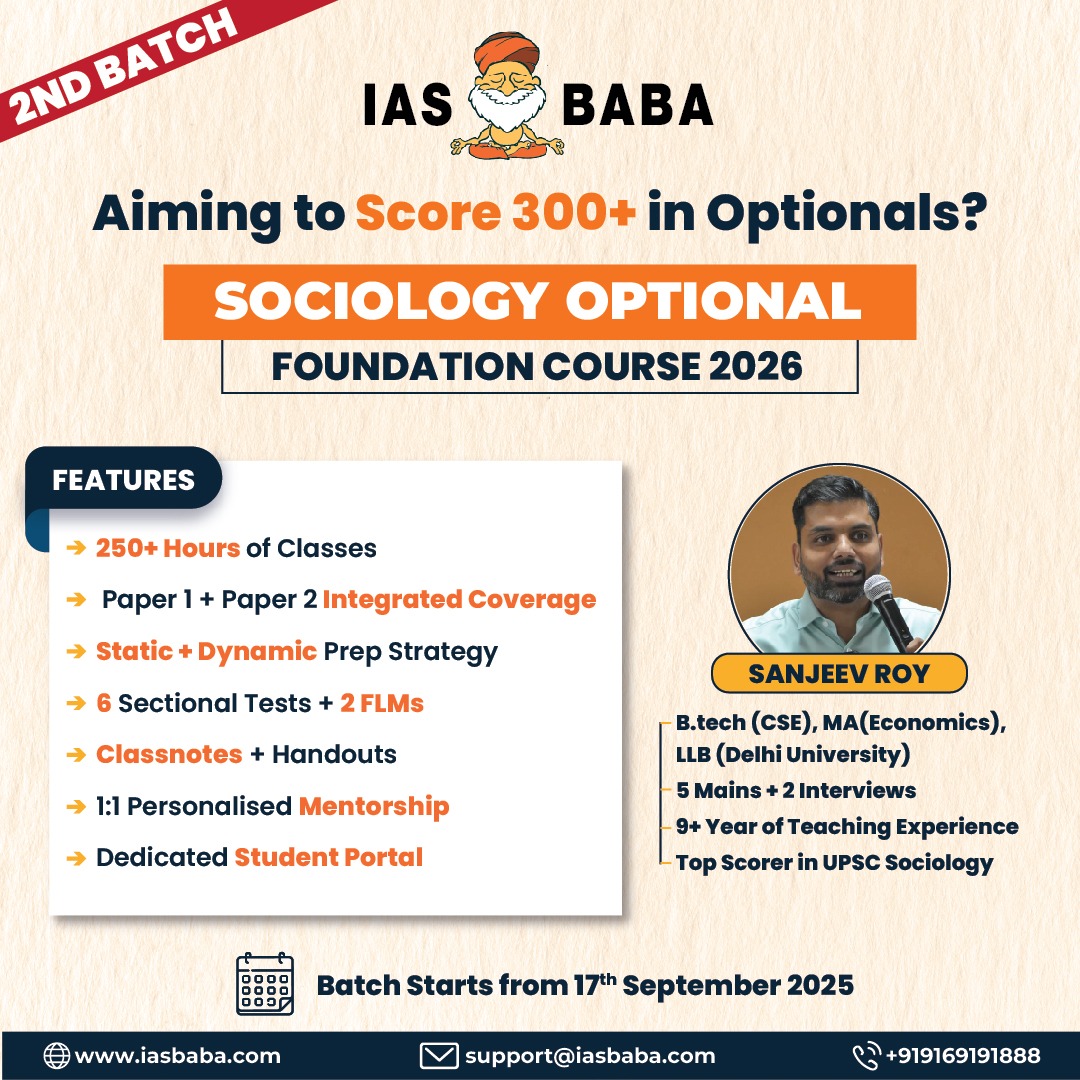IASbaba's Daily Current Affairs Analysis
rchives
(PRELIMS Focus)
Category: SCIENCE AND TECHNOLOGY
Context: ISRO has formally agreed to transfer its Small Satellite Launch Vehicle (SSLV) technology to Hindustan Aeronautics Ltd (HAL), marking a major step in India’s space sector privatization.
Key Agreement Details
- Facilitated by INSPACe, this is ISRO’s 100th technology transfer, signed in Bengaluru with NSIL and HAL.
- HAL will acquire SSLV know-how, with ISRO providing training and technical support.
- HAL can now independently manufacture SSLVs for Indian and global markets.
Strategic Significance
- Strengthens India’s cost-competitive small satellite launch capabilities.
- Expands industry participation in space and helps India capture a larger share of the growing global small satellite market.
Learning Corner:
The Small Satellite Launch Vehicle (SSLV) is ISRO’s latest launch vehicle designed to cater to the growing demand for launching small satellites quickly and cost-effectively.
Key Features
- Payload Capacity: Can carry about 500 kg to Low Earth Orbit (LEO) and 300 kg to Sun-Synchronous Polar Orbit (SSPO).
- Configuration: A three-stage solid propulsion rocket with a liquid propulsion-based Velocity Trimming Module (VTM) for precise orbital insertion.
- Cost-Effective: Designed for low-cost launches, with a quick turnaround time and minimum ground infrastructure requirements.
- Flexibility: Allows on-demand launch services and the ability to place multiple satellites in different orbits.
Advantages
- Meets the needs of the booming small satellite market, both domestic and international.
- Reduces dependence on foreign launchers for small satellites.
- Strengthens India’s position in the global commercial launch market.
First Flight
- The maiden flight of SSLV was conducted on 7 August 2022 from Sriharikota but faced anomalies.
- The first successful flight was achieved on 10 February 2023, placing EOS-07 and two customer satellites into orbit.
Source: THE HINDU
Category: INTERNATIONAL
Context : Peace in eastern Democratic Republic of the Congo (DRC) remains elusive despite recent U.S.-brokered and Qatar-mediated efforts, due to ongoing armed conflict, unresolved historical tensions, and competition over vast mineral resources.
Key Developments
- In June 2025, the U.S. brokered a peace deal between Rwanda and the DRC to end hostilities and support for groups like M23.
- In July 2025, a Qatar-mediated ceasefire between the DRC and M23 collapsed as M23 resumed its offensive.
U.S. Interests
- Securing access to the DRC’s $24 trillion mineral reserves (cobalt, coltan).
- Countering China’s growing influence in the region.
Ceasefire Breakdown
- M23 continued attacks despite the truce.
- Both sides failed to honor pledges, including violence reduction and prisoner releases.
Root Causes
- Legacy of the Rwandan genocide and Congo wars.
- Ethnic tensions and over 100 armed groups operating in the region.
- History of broken agreements and lack of trust among stakeholders.
Learning Corner:
The Democratic Republic of the Congo (DRC) has faced chronic political turmoil, shaped by weak governance, corruption, contested elections, and recurring conflict fueled by ethnic divisions and control over vast mineral wealth.
Key Factors
- Post-Colonial Instability: Since independence from Belgium in 1960, the DRC has endured coups, authoritarian rule, and civil wars.
- Conflict in the East: Ongoing violence in eastern DRC, involving groups like the M23, stems from unresolved grievances of the Rwandan genocide, ethnic rivalries, and struggles over mineral-rich territories.
- Governance Issues: Corruption, fragile institutions, and lack of effective state control in remote regions undermine political stability.
- Electoral Disputes: Elections are often marred by allegations of fraud, violence, and delayed transitions of power, eroding public trust.
- Foreign Involvement: Neighboring states and global powers are deeply involved, motivated by security concerns and competition for cobalt, coltan, and other resources.
Source: THE HINDU
Category: ECONOMICS
Context: Stablecoins, digital assets pegged to the US dollar, are expanding rapidly with a market capitalization above $280 billion, projected to reach $2 trillion within three years.
Why They Matter
- Enable instant, low-cost, dollar-pegged settlements.
- 99% are dollar-backed, mainly by Tether and Circle.
- Boost global demand for US Treasury bonds as reserves are held in such assets.
Global & Policy Implications
- Reinforce the US dollar’s global “exorbitant privilege.”
- Risks include financial instability, regulatory arbitrage, and shadow banking.
- Vulnerabilities may arise if reserves lose value or confidence falters.
- New regulations are under discussion, especially in the US and Europe.
Learning Corner:
Different types of cryptocurrencies:
Payment Cryptocurrencies
- Designed as digital money for peer-to-peer transactions.
- Focus on being a medium of exchange and store of value.
- Examples: Bitcoin (BTC), Litecoin (LTC).
Stablecoins
- Cryptocurrencies pegged to stable assets like the US dollar, gold, or government bonds.
- Aim to reduce price volatility and enable fast, low-cost settlements.
- Examples: Tether (USDT), USD Coin (USDC), DAI.
Utility Tokens
- Provide access to specific products or services within a blockchain ecosystem.
- Often used to pay for transaction fees, storage, or smart contract execution.
- Examples: Ethereum (ETH), Binance Coin (BNB).
Security Tokens
- Represent ownership of real-world assets (like shares, bonds, or property).
- Regulated under securities laws, providing dividends or profit-sharing rights.
- Example: Tokenized stocks or real estate platforms.
Central Bank Digital Currencies (CBDCs) (state-backed)
- Issued and regulated by central banks, unlike decentralized cryptos.
- Aim to provide digital versions of national currencies.
- Example: Digital Yuan (e-CNY), Digital Rupee (pilot in India).
Privacy Coins
- Focus on enhanced anonymity and untraceable transactions.
- Use advanced cryptography to hide sender, receiver, and amount.
- Examples: Monero (XMR), Zcash (ZEC).
Governance Tokens
- Allow holders to vote on blockchain protocol changes, upgrades, or treasury decisions.
- Enable decentralized governance of networks.
- Examples: Uniswap (UNI), Maker (MKR).
Source: THE HINDU
Category: POLITY
Context : For the first time, the 2027 Census will include geotagging of all buildings, marking their precise latitude–longitude using GIS technology
- A Census House will be geotagged during the House Listing Operations (April–September 2026).
How it Works
- Enumerators will use smartphones to map each building in its House Listing Block through Digital Layout Mapping.
- All buildings—residential, vacant, or non-residential—will be classified and digitally mapped.
Benefits
- Ensures accurate counts of houses and households.
- Improves field management and data integrity.
- Supports better resource planning and policy-making.
- Builds on geotagging experience from earlier housing schemes but will be India’s largest digital mapping exercise.
Learning Corner:
Geotagging
- Definition: Geotagging is the process of attaching the geographical coordinates (latitude and longitude) to physical objects, locations, or digital content such as photographs, buildings, and infrastructure.
How it Works
- Uses GPS (Global Positioning System) and GIS (Geographic Information System) technology.
- Smartphones or digital devices capture the exact position of an object on Earth and tag it with coordinates.
Applications
- Governance & Planning – Used in Census operations, government housing schemes, and urban planning.
- Disaster Management – Helps track affected areas, resources, and relief distribution.
- Environmental Monitoring – Mapping forests, wetlands, and wildlife habitats.
- Security & Law Enforcement – Tracking assets, monitoring borders, and crime mapping.
- Everyday Use – Social media check-ins, tagged photographs, and navigation apps.
Benefits
- Improves accuracy, transparency, and accountability.
- Facilitates better planning, monitoring, and decision-making.
Source: THE INDIAN EXPRESS
Category: POLITY
Context: Attended by senior officials from 30 States/UTs, Union Ministries, UN agencies, and think tanks.
Key Highlights
- Inaugural addresses by NITI leadership, EAC-PM, UN representatives, and policy experts.
- Focused on MPI as a tool for poverty reduction, governance improvement, and advancing SDGs.
- Discussions on data-driven policymaking, reducing survey periodicity, and improving targeting of welfare schemes.
- States shared innovations like Tamil Nadu’s Breakfast Scheme, UP’s Sambhav Abhiyan, Andhra’s Zero Poverty-P4, and Odisha’s Social Protection Platform.
- Technical sessions explained MPI methodology with hands-on exercises.
Significance
The workshop aimed to strengthen national and state capacity to apply MPI data for policymaking, program delivery, and monitoring—ensuring more precise poverty alleviation and leaving no one behind.
Learning Corner:
Multidimensional Poverty Index (MPI)
- The MPI is a global measure developed by the UNDP and Oxford Poverty & Human Development Initiative (OPHI) to capture poverty beyond income levels.
- It reflects deprivations in multiple dimensions of human development that directly affect well-being.
Dimensions & Indicators
MPI is based on three broad dimensions, subdivided into indicators:
- Health – Nutrition, Child mortality.
- Education – Years of schooling, School attendance.
- Standard of Living – Cooking fuel, Sanitation, Drinking water, Electricity, Housing, Assets.
- A household is considered multidimensionally poor if it is deprived in at least one-third (33%) of the weighted indicators.
Calculation
- MPI = Incidence of poverty (H) × Intensity of poverty (A)
- H: Proportion of people who are multidimensionally poor.
- A: Average proportion of deprivations experienced by poor households.
Significance
- Provides a holistic measure of poverty, not just monetary poverty.
- Helps governments identify target groups, allocate resources, and monitor progress toward SDG 1 (No Poverty).
- India publishes its own National MPI through NITI Aayog, adapted to local conditions.
Source: PIB
(MAINS Focus)
Introduction (Context)
Road development in India’s tribal hinterlands, particularly in Maoist-affected regions, is increasingly being recognised not just as a tool of connectivity but as an instrument of governance and peace-building.
Parallel institutions by insurgents
- When the government is absent in remote areas, other groups step in to act like the state.
- Diego Gambetta’s study of the Sicilian Mafia shows how such groups start doing things like solving disputes and collecting taxes.
- Similarly, in India’s tribal regions, Maoist groups try to fill the gap by running informal courts (jan adalats) and forcing people to pay their own “taxes.”
- In some tribal areas where there are no government clinics, Maoist or Naxalite groups sometimes provide basic medical help. But this is not out of kindness it is a way to show people that they can act like the government and gain support.
- Researchers like Alpa Shah and Human Rights Watch found that these groups give some health services and welfare activities, but always with the hidden threat of violence.
- Maoist-run jan adalats often deliver quick but harsh punishments, including executions, without due process. This creates an atmosphere of terror rather than justice.
Why is Road Development Important?
- In conflict-prone States like Chhattisgarh, Jharkhand, and Odisha, road development is strongly linked with better access to electricity, employment, and security.
- Roads break the isolation that allows insurgent groups to dominate and expand influence.
- They enable the state to establish schools, clinics, police stations, and courts, restoring formal governance in remote areas.
- By providing legitimate services, roads undercut the authority of insurgents who rely on coercion and extralegal control.
- Roads facilitate the extension of constitutional governance, ensuring justice, equality, and citizen rights.
- They help replace fear-based control with legitimate governance, building peace, stability, and trust in conflict-affected regions.
Jain and Biswas (2023) have shown that road connectivity correlates with a decline in crime and increased service access in rural India.
Internationally, Rafael Prieto-Curiel and Ronaldo Menezes (2020) demonstrate that violence is higher in poorly connected areas, whether in cities or rural zones. Infrastructure, they argue, is not merely functional; it is political.
Way forward
Without institutional safeguards such as justice mechanisms, health-care access, and community consultation, they risk becoming symbols of control rather than inclusion.
Steps needed are:
- Road projects must involve community participation to ensure legitimacy and acceptance.
- Development should integrate constitutional values, equity, and social justice, not just replace insurgent authority
- Complement road development with schools, clinics, courts, and policing to ensure that infrastructure translates into governance and opportunity.
Conclusion
Road development in tribal and conflict-affected areas is more than connectivity; it is peace-building. When combined with institutional safeguards and rights-based governance, roads extend justice, dignity, and belonging, replacing fear with legitimacy and empowering marginalized communities.
Mains Practice Question
Q Discuss the significance of roads in restoring state legitimacy, addressing insurgency, and promoting inclusive development in conflict-affected tribal regions. (250 words, 15 marks)
Source: https://www.thehindu.com/opinion/op-ed/to-build-roads-is-to-build-peace/article70034642.ece
Introduction (Context)
The primary sector in India provides employment to 44 per cent of the labour force while contributing less than 20 per cent to the country’s GDP. Agriculture’s share in employment has fallen slowly, its share in GDP has declined relatively faster.
Hence, Rural households in India are increasingly diversifying their income sources through non-farm primary activities like livestock rearing, fisheries, and forestry. These sectors not only strengthen the rural economy but also contribute to health and nutrition.
What are Non-Farm Primary Activities?
The primary sector comprises activities that exploit natural resources for producing goods.
Non-farm primary activities are economic activities dependent on natural resources other than crop farming. They include:
- Animal husbandry and dairying
- Fisheries (marine and inland)
- Forestry and forest-based livelihoods
- Mining and quarrying
Significance
- Fisheries sector provides employment to around 28 million people, largely from marginalised and vulnerable communities.
- Around 20.5 million people are employed in livestock-related activities.
- Livestock sector’s contribution to agriculture and allied GVA rose from 24.38% in 2014-15 to 30.23% in 2022-23, accounting for 5.5% of total GVA.
- Non-farm primary activities provide crucial income support for both farming and landless households.
- These activities enhance food security by supplying affordable and nutritious food.
- Livestock is considered more egalitarian than crop farming, as landless households can engage in it.
- Overall, non-farm primary activities act as a diversification strategy and play a key role in poverty reduction and inclusive growth.
Social dimension
- A large part of livestock work is done by women, making this sector important for women’s empowerment.
- Landless families depend more on animal rearing for income compared to dominant-caste households.
- Many marginalised communities are engaged in fisheries, which makes them more vulnerable to income shocks. Example: The Kaibartas of Assam, a fishing community without land, had to shift to other non-farm jobs when fishing incomes declined.
Current Status
- Rural households in India are increasingly becoming pluri-active, engaging in crop production, animal husbandry, non-farm self-employment, casual labour (farm and non-farm), and migration.
- NABARD All-India Rural Financial Inclusion Survey (2021-22) shows crop cultivation contributes one-third of farm households’ income, while livestock rearing alone adds about 12%.
- Households also earn from government/private services, wage labour, and small enterprises, indicating diversification beyond farming.
- Studies showing an increasing productivity in the livestock sector, especially in states that benefited most from the Green Revolution.
- States that benefited from both the Green Revolution and the White Revolution, there was a noted rise in high milk-yielding cattle.
Rural households diversify income to reduce risks, cope with shocks, and address seasonal gaps.
Livestock earnings often finance migration or provide fallback support during lean periods. Thus, non-farm activities serve as a crucial insurance mechanism against crop failure, drought, and other natural calamities.
Linkages with Physiographic Features
- India’s 7,500 km coastline and river basins (Ganga, Brahmaputra, Mahanadi) sustain marine and inland fisheries.
- Forests in Central India and the North-East provide tendu leaves, lac, and bamboo; initiatives like the Green India Mission promote sustainable use.
- Low rainfall regions like Rajasthan and Gujarat rely on cattle, goat, camel, and sheep rearing; Operation Flood turned Gujarat’s Amul into a dairy success.
- The Chhotanagpur Plateau is rich in coal and iron ore, offering jobs but causing displacement and ecological stress (e.g., Dhanbad coal mining).
- Cold regions like Ladakh and Himachal support yak rearing and apple cultivation; MIDH boosts horticulture-based diversification.
Government initiatives
- Pradhan Mantri Matsya Sampada Yojana (PMMSY): Aims to improve fish production, productivity, and value chain development through financial and technical support.
- National Livestock Mission (NLM): Promotes sustainable livestock rearing by improving fodder, animal health, and rural employment
- Rashtriya Gokul Mission: Focuses on conservation and genetic improvement of indigenous cattle breeds to enhance milk productivity.
- National Mission for Green India: Encourages afforestation, sustainable forestry, and livelihood generation for forest-dependent communities.
- Livestock Insurance Scheme: Protects farmers from financial loss due to animal deaths, covering high-yielding cattle and buffalo.
- National Bamboo Mission: Promotes bamboo cultivation and processing to support artisans and rural industries.
- National Fisheries Development Board (NFDB): Strengthens fishery infrastructure, training, and marketing for fisherfolk.
Way Forward
- Strengthen institutional support for livestock, fisheries, and forestry with targeted credit and insurance.
- Promote women-centric interventions and recognise their invisible labour.
- Ensure ecological sustainability by respecting local knowledge and resource limits.
- Diversify rural economy by integrating non-farm activities into broader rural development strategies.
Conclusion
Non-farm primary activities are more than just supplementary sources of income they are pillars of rural resilience, nutrition, and inclusive growth. By empowering marginalised communities, reducing poverty, and providing insurance against agrarian shocks, they strengthen the socio-economic fabric of rural India. However, success depends on the balance productivity with ecological sustainability and social equity.
Mains Practice Question
Q Discuss the role of non-farm primary activities in sustaining rural livelihoods in India. How can policy interventions ensure both economic resilience and ecological sustainability? (250 words, 15 marks)
